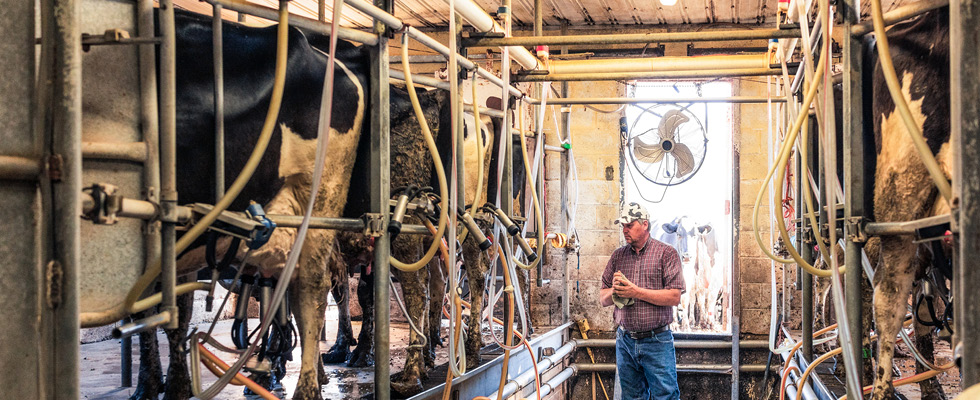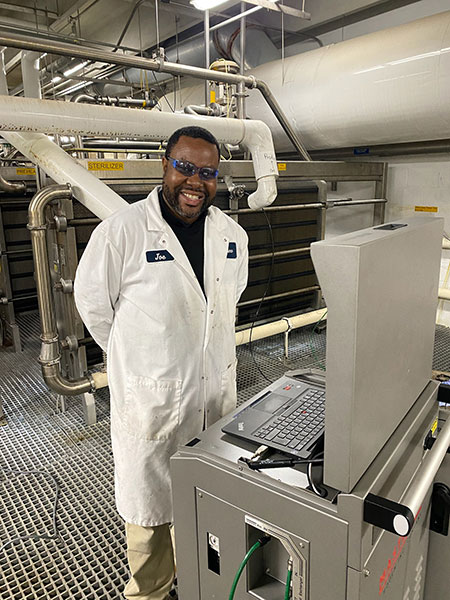
Historical Challenges in Milk Safety
In the early 20th century, one out of every four foodborne illnesses was directly related to dairy consumption. Milk safety was not understood at this time, and pasteurization practices and other safety measures were not consistently applied on farms, in dairy processing plants or during the transportation of milk and other dairy products. As cities grew and the population became more urban, keeping milk safe over long distances became a challenge.

The Birth of Regulation: The Pasteurized Milk Ordinance
In response to this widespread problem, an ordinance—originally called the Standard Milk Ordinance but now known as the Pasteurized Milk Ordinance (PMO)—was created to reduce the risk of foodborne illness coming from dairy products. This ordinance was driven by science to keep the nation’s milk and dairy supply safe for consumption. It created the foundation for a uniform system of regulating milk across state, city and county lines.
From the cow to the glass, milk is kept safe through compliance with the PMO. First created in 1924 by the United States Public Health Service, the PMO is the industry standard guide for dairy farm and dairy food processing plant specifications. The PMO applies to milk from cattle, sheep, goats and other hooved animals.

the farm and the design of milking areas to
prevent contamination.
Safety Starts at the Farm
PMO regulatory oversight starts at the farm and the design of milking areas to prevent contamination. Detailed specifications include items such as the construction of the milk house and facilities, water supply, utensils used for sanitation, milking apparatus and raw milk cooling tanks. The PMO includes intricate details down to the designated hand washing station within the milk parlor.
The PMO does not stop at the design of the milking areas of the farm. It also includes animal health regulations. The animals’ general well-being relates directly to the quality and safety of the raw milk. Milk samples are taken to ensure the absence of harmful pathogens before the milk is loaded into a transport tanker. Additionally, each dairy farm is required to be inspected at regular intervals to ensure compliance with the PMO.
Ensuring Safe Transportation to the Processing Plant
When raw milk leaves the farm during transport, the tanker takes the milk to a processing and packaging facility. Upon arrival, the raw milk is transferred to a storage silo specifically designed to keep it safe for processing. Each raw milk storage silo must have a temperature recording system, which continuously monitors the temperature of the raw milk until processing. Raw milk must be held under 45 F and must be processed within 72 hours. Records of this must be maintained and available for inspection at all times.
Pasteurization: A Vital Step in Milk Safety
From the storage tank, the raw milk is sent to be pasteurized. This process heats the milk to a regulated temperature of 161 F or above and holds it at that temperature for a minimum of 15 seconds. This process is achieved through a heat exchanger and is referred to as a high temperature short time (HTST). The pasteurization process is designed to kill bacteria and other pathogens in the raw product. Once the milk has been pasteurized, it is no longer considered to be “raw.”
After pasteurization is complete, the milk is cooled and then held in a dedicated storage silo to prevent cross-contamination with raw milk. It will then be packaged and kept at below 45 F during storage and transportation to the store.

Broadening Impact Beyond Dairy
While the PMO officially applies only to Grade A milk production, it is also used as a guideline in other food and drink processing facilities to ensure the safety of their products. These facilities utilize the same storage and pasteurization principles as the PMO. They produce a product that is safe for human consumption while having no unintended impact on its flavor. Some examples of other such products are baby foods and formula, ice creams, fruit and vegetable juices, soft drinks, sports drinks and water.
Regulatory Compliance & Consumer Confidence
The Food and Drug Administration (FDA) has authority over all PMO-regulated facilities, and each state is responsible for PMO compliance inspections on a quarterly basis. Many facilities utilize third-party inspection and testing services in addition to the mandated state inspections to ensure compliance with PMO regulations.
The PMO has played a pivotal role in ensuring the safety of the U.S. dairy industry for the past century through meticulous regulation and oversight, from farm practices to processing and transportation. Adherence to the PMO remains integral to maintaining the high standards of milk safety and upholding public health.

